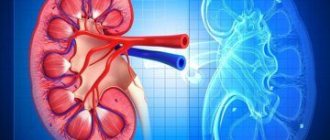Depression is widespread in old age. It is at the end of life that a person is overwhelmed by sad thoughts. I didn’t manage to do something, I couldn’t do something, there can be a lot of reasons for frustration. Depressed mood is aggravated by senile insomnia and chronic fatigue. In this state, a person is mentally very vulnerable and may not behave quite adequately. The task of relatives and friends is to help an elderly relative cope with depression. How to do this, read our article.
What are the characteristics of depression in an elderly person?
Depression in an elderly person is more difficult to detect than a similar condition in a middle-aged person. Older people are very imaginary, and as mentioned earlier, I can hide my problems so as not to cause upset and condemnation from family members. They can justify a severe emotional state by weather dependence and chronic diseases. In such a mood, a pensioner can behave quite strangely:
- avoid talking
- spend a lot of time alone
- give up your favorite foods
- quit your favorite hobby
Sometimes, if such deviations in behavior go unnoticed, the depression of an elderly person can reach a critical point, which will lead to a suicide attempt.
Depression in old age
Treatment of depression
Unfortunately, depressive disorders in the elderly often remain undiagnosed.
Epidemiological studies show a dismal picture: less than 1 in 10 people with depression are prescribed antidepressants, and more than 50% of patients receive antidepressants at subtherapeutic doses, and benzodiazepines are extremely common. At the same time, adequate treatment of depression can significantly improve the condition and quality of life of an elderly patient. Ideally, treatment for depression in the elderly should be multimodal, including medical, psychological and social assistance. Depression with onset at a late age is characterized by a poor prognosis, including not only a small percentage of remissions, but also the development of complications associated with somatic diseases. In addition, the prognosis of depression in the elderly with structural brain changes is worse than in depressed patients without structural brain changes. These patients may require additional therapeutic strategies. Unfortunately, most treatment recommendations are based on evidence from studies in middle-aged populations. Elderly patients have characteristic features, primarily in relation to the pharmacokinetics of drugs.
The elderly exhibit wide individual variability in drug metabolism. This makes it difficult to predict target dosages for tricyclic antidepressants (TCAs), so starting with low doses and increasing them gradually. This issue is partially resolved with the use of new antidepressants. In most cases, clinicians prescribe newer antidepressants at more adequate dosages than TADs. The smaller range of side effects and low level of interaction with somatic drugs of new antidepressants are also a significant advantage, especially in elderly patients.
However, TADs are superior to selective serotonin reuptake inhibitors (SSRIs) in both older men and women. It is noteworthy that, under the influence of hormonal changes during the menopausal period, women's response to antidepressant therapy changes. Premenopausal women respond better to SSRIs than menopausal women. TADs are equally highly effective in men and postmenopausal women. Dual-acting antidepressants may be a definite alternative in terms of efficacy/tolerability ratio in elderly patients. This class of antidepressants has efficacy comparable to that of TADs and tolerability with SSRIs. Controlled studies have shown that dual-acting antidepressants are more effective than SSRIs in women over 50 years of age. In addition, dual-acting antidepressants have the ability to affect vasomotor symptoms, which is especially important for women suffering from menopausal depression.
Among the dual-acting antidepressants, the most balanced (having approximately the same affinity for binding both transport subunits that reuptake serotonin and transport subunits that reuptake norepinephrine) is duloxetine. This drug is one of the most powerful antidepressants in terms of its affinity for binding transport subunits of serotonin and norepinephrine. Duloxetine stands out among modern antidepressants for the following clinical advantages:
1) a positive effect on difficult-to-treat symptoms of depression: depressed mood, asthenic symptoms, sleep disorders, somatic symptoms of depression, pain; 2) effectiveness in patients with poor response to SSRI treatment. Duloxetine also has a minor effect on dopamine reuptake blockade, which theoretically suggests a positive effect of the drug on mnestic complaints in elderly patients.
Side effects of duloxetine are associated with increased concentrations of serotonin and norepinephrine, mainly in somatic cell receptors. The main spectrum of side effects is associated with the serotonergic component. Regarding the tolerability of duloxetine in elderly patients, it should be noted that some patients tolerate smaller dosages better (30 mg/day). A relatively significant side effect of duloxetine in elderly people may be an increase in blood pressure (BP).
According to clinical studies, duloxetine can increase blood pressure by a maximum of 2 mm Hg. Art. Compared with other members of the class of dual-acting antidepressants, the hypertensive effect of duloxetine is least pronounced. However, with long-term use of duloxetine in an elderly patient suffering from hypertension, regular blood pressure monitoring may be required. Duloxetine should be used with caution in elderly men with urological disorders associated with prostate pathology.
Compared to younger patients, older patients recover later. This is due to both the long period of titration of antidepressants and the more distant development of the effect. It must be remembered that in elderly patients the therapeutic effect of antidepressants is often delayed, up to 2 months. The duration of treatment for depression in older people corresponds to the standards of treatment for depression, which averages 6–12 months.
Source: https://www.consilium-medicum.com/
Why do older people get depressed?
In fact, there are many reasons for senile depression. According to research by social workers, the leading position is occupied by retirement. Losing an activity that a person has spent their whole life pursuing can make them feel helpless and worthless. In his opinion, he can no longer benefit his family, which is why the meaning of life is lost. Such conditions are especially difficult for people who, during their working years, held high positions and had great authority. Recent colleagues no longer pay the usual attention to such a person, which greatly hurts self-esteem.
Another impetus for senile depression can be the loss of a loved one. Let's say, after many years of living together, a grandfather who lost his wife may no longer recover. Often, after such emotional upheavals, pensioners go into continuous drunkenness. The death of his own children has a very terrible effect on the mental state of an old man.
In addition to the above, health problems can cause depression. Often old people are embarrassed by their illnesses and feel pitiful. They can no longer perform their previous functions on their own. Problems with excretory function greatly affect the self-esteem of an elderly person, for example, urinary incontinence.
Some medications can trigger depression. This often happens in the postoperative period after the use of anesthesia. Do not discount the general atmosphere in the family. If children treat a pensioner with disrespect or he witnesses scandals, this can also push him into an emotional pit.
Symptoms of depression in the elderly
Relatives often do not immediately notice that a person is developing depression, since this process is quite slow. The clinical picture may begin with a constant feeling of malaise and depression, based on groundless worries about the state of health. At the same time, the patient mentally regularly returns to the past, thinks that he is a burden to his family and has achieved nothing in life, and loses self-respect. At the same time, the old person usually claims that everything is fine with him and he does not need treatment for depression that occurs in the elderly.
Most often, such people complain about:
- general loss of strength;
- apathy;
- constant fatigue;
- Bad mood;
- lack of appetite;
- poor sleep or insomnia.
Be attentive to your loved ones in old age. Especially for those who are trying to isolate themselves, refuse any communication or previously interesting activities. These are the first signs of depression, for which you should seek professional help.
How to help an elderly person get out of depression
The best help for a pensioner in such a situation is total acceptance and care. A positive mood in the family for an older person will create fertile ground for healing. Relatives must show him that he is important and should not deserve love for himself. Spend a little time and help the old man find a new hobby that will help him experience the joy of life and delight again. For example, make his old dream come true. If such measures do not bring results and the person is still depressed, you should consult a psychologist.
Psychotherapy for older people
Psychotherapy is the main mechanism in the fight against depression. Before starting treatment, the doctor will diagnose the disease and draw up an effective treatment regimen for a specific case. An older patient cannot always share his experiences with loved ones. Perhaps he keeps secrets, revealing which he is afraid of condemnation from his family. Therefore, in some cases, you simply cannot do without a psychotherapist. Often, to improve the dynamics of the disease, the doctor may prescribe separate groups of antidepressants. Undoubtedly, drug treatment brings good results, but there are a number of side effects:
- existence in “another reality”
- blurred vision
- hearing loss
- sudden weight gain
- nausea
- lack of coordination
Due to the above factors, of course, psychotherapists try to use natural sedatives for older people.
PsyAndNeuro.ru
Depression accelerates biological aging and increases the risk of obesity, diabetes, cardiovascular diseases, and cognitive impairment. People with depression have a 45% higher risk of stroke than people without depression and a 25% higher risk of stroke-related mortality. In turn, various diseases increase the risk of depression in later life. According to the working model, late-life depression represents clinical manifestations of impairments in the functional networks of reward, salience, and cognitive control.
For major depressive disorder in later life, the effectiveness of antidepressants is lower compared to depression in younger patients. Moreover, the frequency of relapses in old age is higher than in young people. Antidepressants, psychotherapy, or a combination of both reduce the relapse rate of major depressive disorder in later life. Electroconvulsive therapy (ECT) is the most effective treatment with a remission rate of 60–80%. ECT is indicated for patients with psychotic depression not responding well to antidepressants, severe nonpsychotic depression, and nutritional inability. Solution-focused therapy, cognitive behavioral therapy, and interpersonal therapy have efficacy comparable to pharmacotherapy.
Impaired executive functions due to depression have clinical manifestations and neuroimaging findings consistent with frontostriatal dysfunction. The “vascular depression” hypothesis postulates that cerebrovascular disease may contribute to the onset, development, and worsening of certain depressive syndromes in late life. Impaired executive functions in depression, as well as “vascular depression,” are difficult to treat with antidepressants. Dopamine D2/D3 agonists have been shown to be effective for depressive symptoms in patients with Parkinson's disease.
Targeting risk factors for vascular disease in adulthood is a logical approach to preventing “vascular depression.” Computer-assisted cognitive control intervention may improve both executive function and symptoms of late-onset depression. Transcranial magnetic stimulation, which targets subcortical structures involved in mood regulation, is well tolerated in older adults and its effectiveness needs to be studied. There are effective psychotherapies for late-life depression that are underutilized due to the difficulty of training clinicians.
Inflammatory mechanisms are also considered as a factor in the etiology of late-life depression. A review of meta-analyses suggests that nonsteroidal anti-inflammatory drugs (NSAIDs), omega-3 fatty acids, and cytokine antagonists have antidepressant properties in a subgroup of patients with major depressive disorder with evidence of increased inflammatory biomarkers.
Additionally, some studies suggest that amyloid beta accumulation may predispose to late-life depression. In older adults with cognitive impairment, increased amyloid load in the posterior cingulate cortex and precuneus was associated with depressive symptoms. Depression is associated with a high likelihood of developing amnestic-type mild cognitive decline syndrome into Alzheimer's disease. However, several studies have failed to identify an association between Alzheimer's pathology and late-life depression. Antidepressants are generally ineffective for treating depression in patients with dementia, but early, long-term use of antidepressants may reduce the risk of developing dementia in the future.
Author of the translation: Recap A.A.
Source: George S. Alexopoulos. Mechanisms and treatment of late-life depression. Translational Psychiatry (2019) 9:188.









